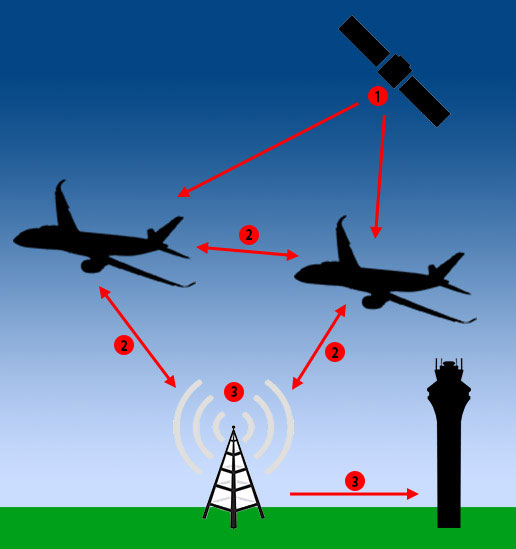07Dec
ADS-B Technology Solutions for Enhanced Aviation Tracking and Safety
 What exactly is ADS-B and do I need it?
What exactly is ADS-B and do I need it?
Automatic Dependent Surveillance – Broadcast (ADS-B) is part of the Federal Aviation Administration's NextGen air traffic control modernization mandate. This mandate requires all aircraft within US airspace to transmit “ADS-B Out” information to ADS-B ground stations and other ADS-B equipped aircraft by 2020. The transmitted information includes aircraft identification, altitude, speed, and velocity - thus, creating a new, real-time situational awareness and surveillance program.
Additional system upgrades may allow aircraft to fly outside the typical strict air traffic corridors, thus, introducing more "bandwidth" by expanding into areas that were previously not utilized. Air traffic control towers may also expand into new areas since ADS-B data is available anywhere over the internet.
Currently, several countries utilize ADS-B, including Canada and Australia, with Europe and Asia rolling out their own systems in the coming years. With the mandate looming, many pilots are looking for affordable ADS-B technology solutions they can integrate into their setup.
How does it all work?
The ADS-B system is comprised of multiple parts, including ground stations and aircraft installed equipment. The ADS-B equipment package installed on the plane includes a GPS unit for providing location information, processing hardware, and antennas for transmitting and receiving the ADS-B signals. ADS-B receiver ground stations pick up ADS-B information broadcast by aircraft flying over head. This information is used by air traffic controllers as a supplement to radar-based tracking. Airspace safety should improve by giving pilots and air traffic controllers additional information about the position of each aircraft in the system, which should help prevent mid-air collisions or close calls during takeoff and landing. As systems such as ADS-B come on-line, existing flight corridors should safely handle an increasing number of daily flights by adding accuracy and redundancy to the existing airline tracking systems.Simplified ADS-B Network Example
 1. GPS satellites provide location information to ADS-B equipped aircraft.
2. ADS-B equipped aircraft transmit altitude, speed and velocity information to other ADS-B equipped aircraft and ADS-B ground stations.
3. ADS-B ground receive stations provide aircraft location back to other aircraft, as well as air traffic control centers.
"ADS-B In" systems can be installed on any aircraft to display location information of other aircraft with ADS-B Out transmitters.
Aircraft also transmit their location directly to other “ADS-B In” equipped aircraft within their transmit area. Thus, forming a long-range mesh network that shares real-time position information.
For pilots flying with Visual Flight Rules cockpit-based ADS-B receiver displays provide earlier warning of aircraft in their flight area. This helps improve safety during inclement weather conditions.
1. GPS satellites provide location information to ADS-B equipped aircraft.
2. ADS-B equipped aircraft transmit altitude, speed and velocity information to other ADS-B equipped aircraft and ADS-B ground stations.
3. ADS-B ground receive stations provide aircraft location back to other aircraft, as well as air traffic control centers.
"ADS-B In" systems can be installed on any aircraft to display location information of other aircraft with ADS-B Out transmitters.
Aircraft also transmit their location directly to other “ADS-B In” equipped aircraft within their transmit area. Thus, forming a long-range mesh network that shares real-time position information.
For pilots flying with Visual Flight Rules cockpit-based ADS-B receiver displays provide earlier warning of aircraft in their flight area. This helps improve safety during inclement weather conditions.

